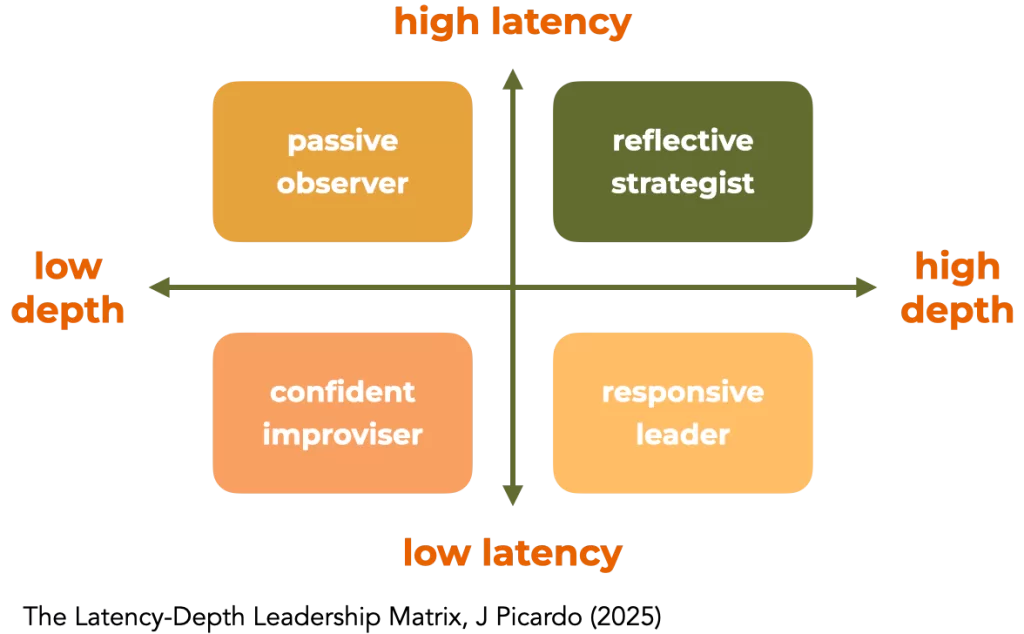In communication theory, latency refers to the time between stimulus and response. Some people respond quickly: we might call them low-latency communicators. They think aloud, process in real time, and speak early and often. Others are high-latency communicators: they pause, observe, weigh implications. Their contributions arrive more slowly, sometimes after others have moved on!
The confident speaker who responds instantly in meetings is frequently perceived as decisive, even strategic. But fluency is not evidence of depth. In fact, quickness can mask superficiality just as slowness can conceal wisdom.
Daniel Kahneman’s Thinking, Fast and Slow is helpful here. He distinguishes between System 1 thinking (fast, instinctive, automatic) and System 2 thinking (slow, deliberate, effortful). Both have a role. But while System 1 makes us appear decisive, it is System 2 that protects us from the illusion of certainty. And in schools, where complexity is the norm (think curriculum, culture, workload, safeguarding, inclusion…), certainty is often a trap.
That’s why latency matters. The slow-moving challenges schools face are rarely solved by a quick remark or a confident answer. They require what we might call high-latency leadership: a willingness to delay judgement, to dwell in ambiguity, to model the intellectual humility that says, “I’m still thinking.”
The problem is that high-latency leadership is frequently misunderstood. The person who waits, who asks clarifying questions, who says, “Let me reflect on that,” can be seen as hesitant or unconfident. Meanwhile, those who speak with fluency and self-assurance are often assumed to be good strategic thinkers, when in fact it’s just the showmanship that impresses.
This does not have to be a false dichotomy. Schools do need both the leader who can make the urgent safeguarding decision at 8:13am, and the one who sees the long-range implications of a curriculum review or staffing restructure. However, the issue arises when we conflate one for the other, and when we assume that those who can think on their feet are necessarily thinking with their head.
To help navigate this dynamic, I’ve found it useful to visualise leadership behaviour along two dimensions:
- The latency of response (from fast to slow)
- The depth of thinking (from shallow to strategic)
When these are mapped together, we see four broad leadership archetypes:

The Reflective Strategist (High Latency, High Depth)
Takes time to respond, but when they do, their insight is grounded in long-range thinking, careful listening, and a strong sense of coherence. Not quick to speak, but when they do, it matters.
- Strength: depth, consideration
- Weakness: being underestimated in environments that reward immediacy
The Responsive Leader (Low Latency, High Depth)
Thinks well and acts quickly. Composed in the moment, able to navigate complexity under pressure without losing sight of the bigger picture.
- Strength: decisiveness underpinned by substance
- Weakness: overextension, prone to skipping consultation in pursuit of momentum
The Confident Improviser (Low Latency, Low Depth)
Fluent and persuasive, often with the “gift of the gab.” At ease in meetings, briefings, and public speaking, but prone to surface-level solutions that lack coherence.
- Strength: presence, charisma
- Weakness: dominates meetings, distracts from strategy, and creates con




2 Comments